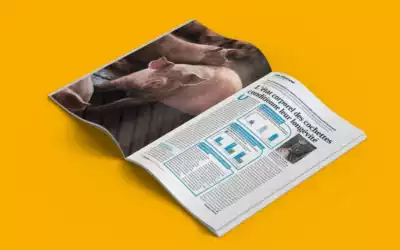FarroWin® includes backfat thickness at farrowing as a risk factor for stillbirth. Indeed, body condition at first farrowing is a key point.
In this study (in French only), 574 gilts from a farrow-to-wean farm (Large White x Landrace) were included. Backfat thickness (BFT) was measured by an ultrasonic tool (Renco lean meter®, P2 location) one week before expected farrowing. The culling rank has been compared between 3 groups according to body condition: thin (BFT ≤ 14mm), correct (BFT between 15 and 20mm), and fat gilts (BFT ≥ 21mm).
In parallel, all reproductive performances were recorded for each gilt at each parity until culling. The culling rate in each group was compared using a non-parametric test followed by a post-hoc comparison test.
Our results showed that the longevity of sows was significantly longer for correct and fat gilts at the first farrowing compared to thin gilt (4.4 mean parity rank at culling and 4.2 versus 3.5 respectively, p=0.026). On average, the cumulative number of weaned piglets per sow from 1st parity to culling was higher for correct gilts compared to thin and fat gilts at the first farrowing (39.3 for correct ones versus 33.7 for thin or 36.5 for fat sows).
This study highlights that thin gilt’s longevity is shorter. Moreover, total weaned piglets until culling is higher in the group in which gilts were classified as correct at first farrowing. These results demonstrate the importance of taking into account body reserve during gilt preparation to improve longevity and reproductive performances.




